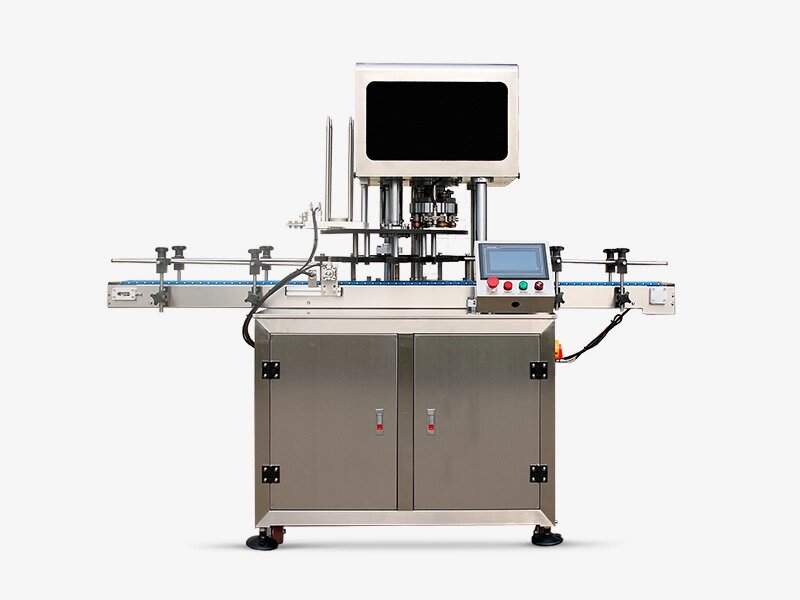A Can Seaming Machine is a piece of equipment used to seal cans. It is used in the food, beverages, and pre-prepared food industries. These machines help businesses meet industry standards and avoid product recalls.
A can seaming machine is a cost-effective investment for many reasons. It is also more accurate than manual sealing.
Consistency in the Sealing Process
A can seamer machine is used to seal a can’s top or bottom, ensuring that the product inside remains airtight and free from contamination. The machine uses two rollers to create a double seam, which is then crimped and sealed to ensure that the can is hermetically sealed.
These machines are primarily used in the food and beverage industry to seal tin-plated metal containers. They are commonly found in large industries to help streamline their packaging processes for more efficient production and savings in operating expenses.
The machine has different components that must be properly installed and calibrated to ensure that the cans are properly sealed. It is also important to train operators and implement safety protocols to minimize accidents and reduce downtime. Additionally, regular lubrication and routine maintenance of the machine can help to keep it running smoothly and efficiently. This includes checking for leaks and replacing worn-out parts. It is also crucial to integrate the machine with conveyor systems to automate the movement of cans and further increase efficiency.
Enhanced Product Quality
When canned foods are sealed correctly with a Can Seaming Machine, they have long duration shelf-lifes. This is because the process creates an airtight seal, keeping out bacteria, molds, enzymes and other microorganisms that could spoil the product and negatively impact its quality.
To ensure the best results, it’s essential to have a machine that is suitable for your products’ shape and size. This will prevent errors like a lid not fitting properly or a seam that is too narrow or thick.
In addition, it’s important to have quality control systems in place to monitor the seaming process and ensure consistency. For example, a clearance gauge can be used to test the distance between the lifter height pressure and the chuck toolings to identify any problems that might impact sealing quality. This helps to avoid costly mistakes such as faulty seals, tampering, or leaks. This also allows businesses to satisfy strict industry regulations regarding food safety standards.
Increased Efficiency
Streamlining the sealing process through use of a Can Seaming Machine eliminates the need to manually seal each can, which is time-consuming and prone to errors. This allows your production team to focus on other tasks, increasing efficiency and reducing costs.
A can seamer consists of several different parts, including a can follower, the chuck, the lid seamer and a seaming roller. The can follower guides the can through the machine to ensure a smooth and even seal, while the chuck keeps the can steady during seaming. The chuck is available in different dimensions depending on the diameter of the can being sealed.
In addition, many can seamers are connected to conveyor systems, which automatically feeds cans into the machine for seaming. These systems can be programmed to accommodate various can sizes and configurations, maximizing efficiency and minimizing downtime. Training operators on machine operation and maintenance is also critical to ensure optimal results. This will allow them to quickly identify and troubleshoot minor issues, minimizing downtime and keeping production on track.
Reduced Waste
Can seaming machines allow manufacturers to increase productivity and improve product quality. They automate the process of sealing cans, which reduces labor costs while ensuring a more accurate and precise seal than is possible with manual methods. The results are well-preserved products that can be stored for extended periods of time without spoiling or degrading in quality.
This is because the machine mechanically extracts air from inside the can before it is hermetically sealed, which eliminates the proliferation of bacteria, enzymes, and other microorganisms that cause spoilage. Additionally, the machine produces a seal that is low in oxygen and high in carbon dioxide, which helps to extend the shelf life of canned goods.
As with any machinery, the can seaming machine needs to be maintained regularly in order to operate properly and efficiently. Following the manufacturer’s manual, cleaning and lubricating parts, and training operators on machine use can help reduce unscheduled downtime and repair costs in the long run.
